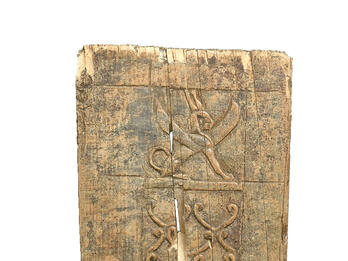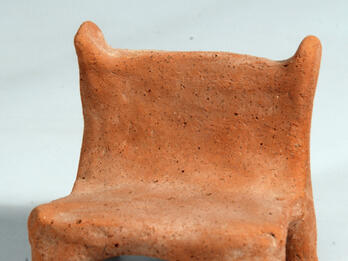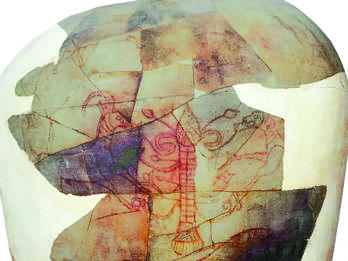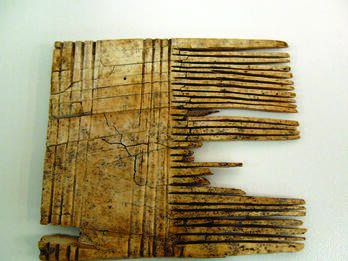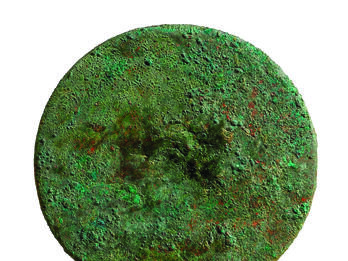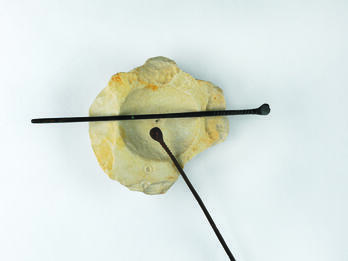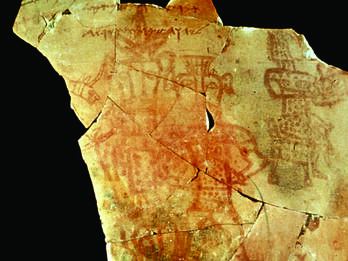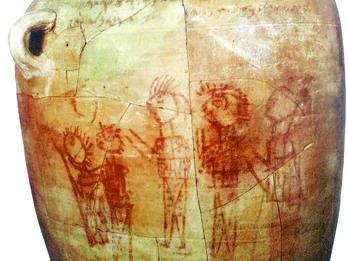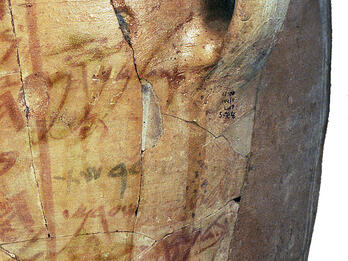Showing Results 1 - 10 of 22
Restricted
Image
The top register of this plaque from Hazor depicts a crouching winged sphinx wearing the double crown of Upper and Lower Egypt. The lower register shows two stylized three-tiered palmettes. The…
Places:
Hazor, Land of Israel (Tel Hazor, Israel)
Date:
Iron Age IIB, first half of 8th century BCE
Subjects:
Categories:
Restricted
Image
Since chairs and beds were valuable items and not found in average homes (people usually sat on the floor and slept on mats), it is possible that terra-cotta models like this one from Lachish…
Places:
Lachish, Land of Israel (Tel Lakhish, Israel)
Date:
Iron Age IIB, 8th Century BCE
Subjects:
Categories:
Restricted
Image
In this detail from the left side of a pithos (storage jar) from Kuntillet Ajrud, two ibexes are eating the flora of a schematic tree, all set above a striding lion. These common motifs are typically…
Places:
Kuntillet Ajrud, Land of Israel (Kuntillat Jurayyah, Egypt)
Date:
Iron Age IIB, Late 9th–Early 8th Century BCE
Subjects:
Categories:
Restricted
Image
This comb is from a Philistine site at Ekron, but combs looked the same throughout the region.
Places:
Ekron, Land of Israel (Jerusalem, Israel)
Date:
Iron Age I, 11th Century BCE
Subjects:
Categories:
Restricted
Image
This mirror was found in the Moringa burial cave at En Gedi; its tang would have been fitted into a handle, now missing, made of metal, ivory, or bone (see Ivory and Bone Carvings and Engraved…
Places:
‘En Gedi, Land of Israel (‘En Gedi, Israel)
Date:
Persian Period, 5th Century BCE
Subjects:
Categories:
Restricted
Image
These cosmetic implements from Gibeon include a limestone bowl decorated with small, incised circles and two bronze spatulas. Tweezers for plucking hairs have also been found.
Places:
Gibeon, Land of Israel (Gibeon, West Bank)
Date:
Iron Age I–II, 12th–6th Century BCE
Subjects:
Categories:
Restricted
Image
Ivory-inlaid bed, Salamis, Cyprus, 8th or 7th century BCE. Among the most beautiful items surviving from Israel and neighboring countries are the ivory carvings used for decorating furniture, among…
Places:
Salamis, Cyprus (Famagusta, Cyprus)
Date:
Iron Age II, 8th–7th Century BCE
Subjects:
Categories:
Restricted
Image
This detail appears on the right side of a pithos (storage jar) from Kuntillet Ajrud. The two Bes figures on the lower left are unrelated to the lyre player in the upper right. Bes was a minor…
Places:
Kuntillet Ajrud, Land of Israel (Kuntillat Jurayyah, Egypt)
Date:
Iron Age II, Late 9th–Early 8th Century BCE
Subjects:
Categories:
Restricted
Image
In this detail from a pithos (storage jar) from Kuntillet Ajrud, five people stand with raised forearms (their hands are not depicted). As raised hands usually signify praying, the scene may represent…
Places:
Kuntillet Ajrud, Land of Israel (Kuntillat Jurayyah, Egypt)
Date:
Iron Age II, Late 9th–Early 8th Century BCE
Subjects:
Categories:
Restricted
Image
An abecedary is a list of the letters of the alphabet, written in order, for instruction or practice in writing, and perhaps also for other purposes. Four abecedaries were written on this large…
Places:
Kuntillet Ajrud, Land of Israel (Kuntillat Jurayyah, Egypt)
Date:
Late 9th–Early 8th Century BCE


